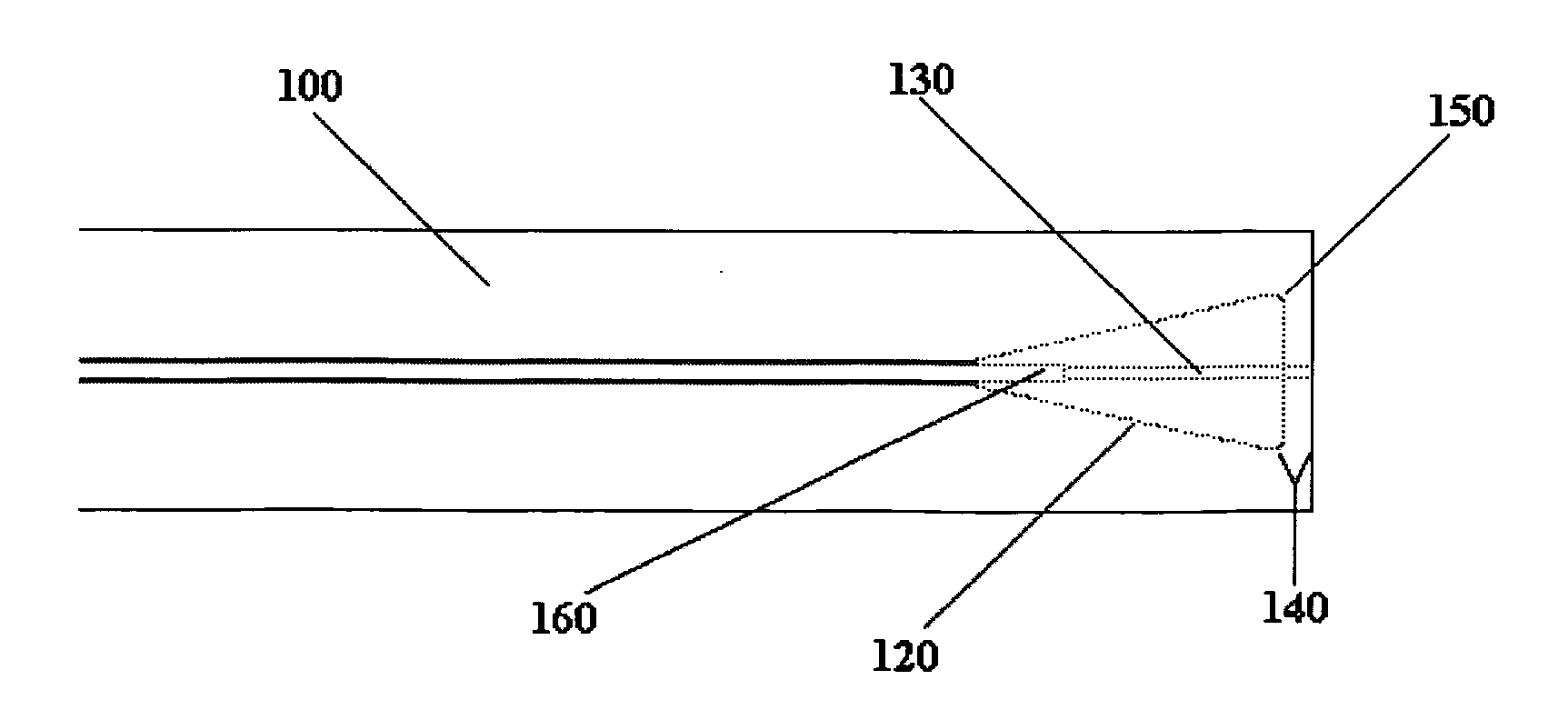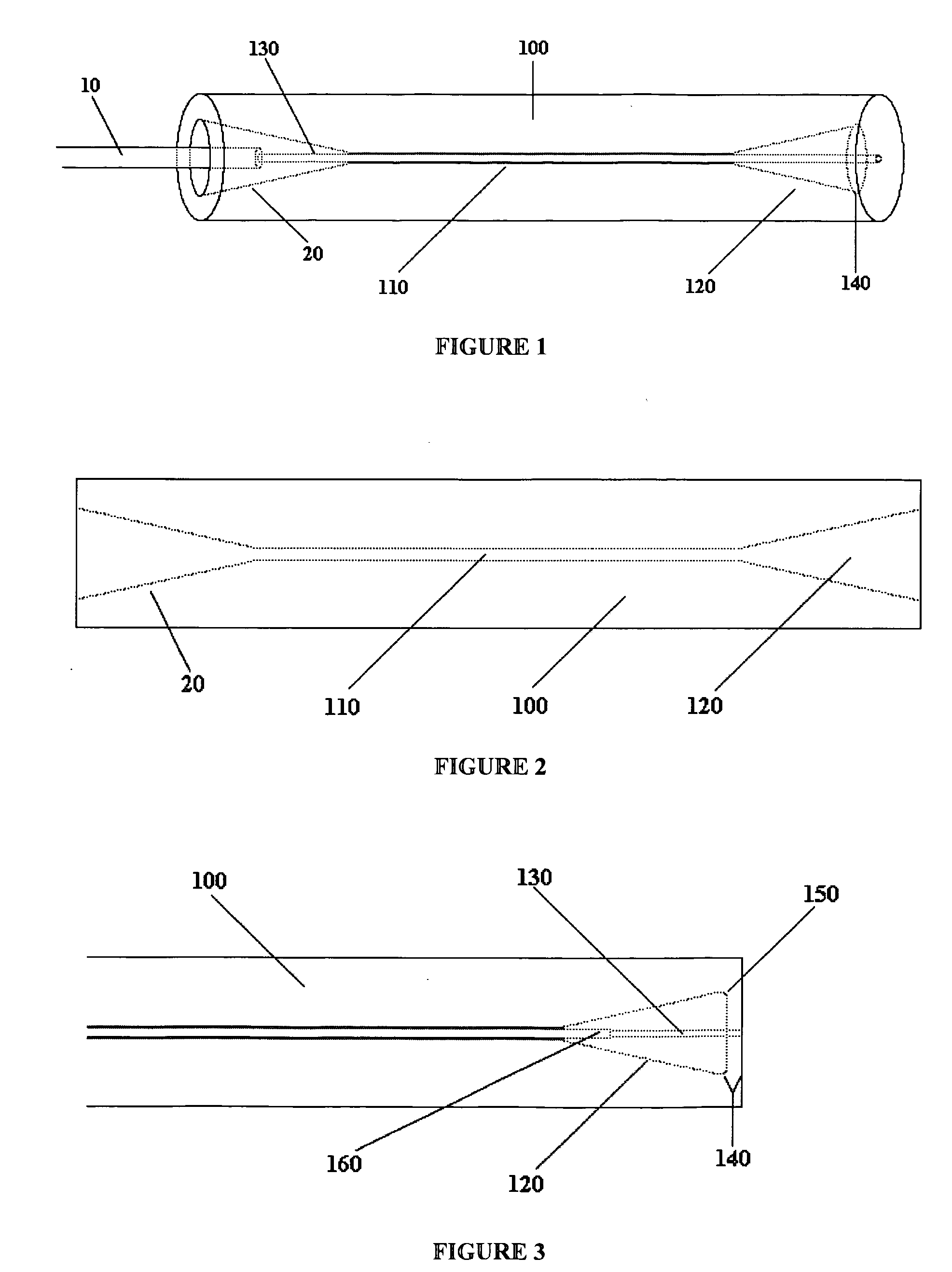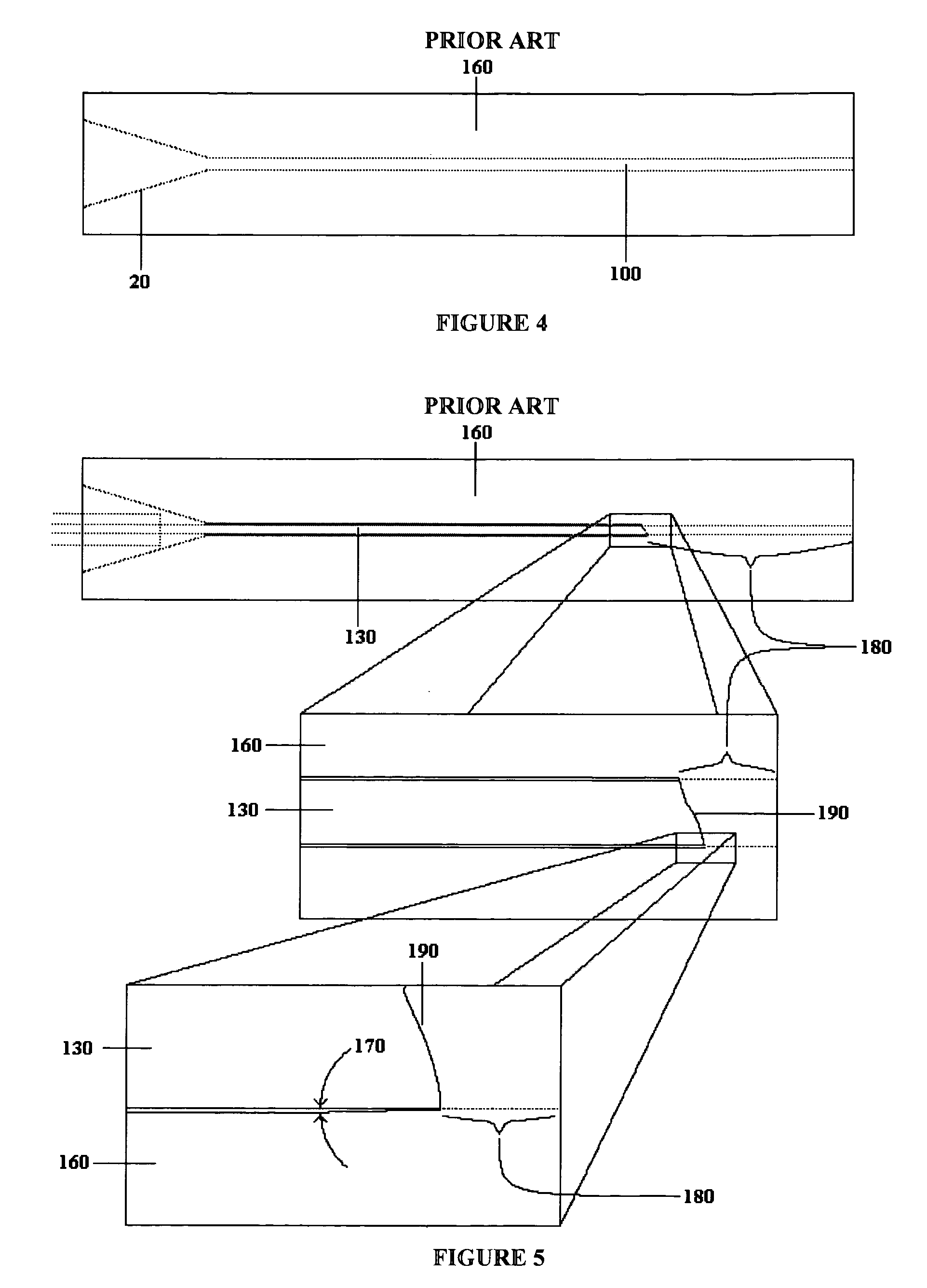High energy fiber terminations and methods
a technology of high energy fiber and termination, applied in the direction of instruments, optical light guides, optics, etc., can solve the problems of residual physical stresses and strains in traditional packages, degrade optical and mechanical affect the performance of the overall package, so as to achieve the effect of reducing residual stresses
- Summary
- Abstract
- Description
- Claims
- Application Information
AI Technical Summary
Benefits of technology
Problems solved by technology
Method used
Image
Examples
Embodiment Construction
[0035]FIG. 4 comprises a view in section of the prior art ferrule 160, equipped with a standard insertion cone 20 to aid entry of delicate, bare fiber, which may or may not employ a preferentially softenable material within bore 110. A hermetic (fused) fiber-in-ferrule termination of prior art is illustrated in FIG. 5, comprising a view in partial section through the fused portion 180, illustrating the asymmetry 190 of the generally lengthy fusion with low contact angle 170 between the fiber 130 and ferrule 160.
[0036] The preferred embodiment is illustrated in FIG. 1, comprising a perspective view of a fused, low stress termination of a buffered optical fiber 10 within the ferrule 100 with constant bore section 110 and terminal conical bores 120 and 20. The fragile, bare fiber section 130 is fused within one terminal conic bore 120 at 140. FIG. 3 is a view in partial section of the fusion portion of the terminated fiber-in-ferrule illustrating the relatively short, centrosymmetric ...
PUM
 Login to View More
Login to View More Abstract
Description
Claims
Application Information
 Login to View More
Login to View More - R&D
- Intellectual Property
- Life Sciences
- Materials
- Tech Scout
- Unparalleled Data Quality
- Higher Quality Content
- 60% Fewer Hallucinations
Browse by: Latest US Patents, China's latest patents, Technical Efficacy Thesaurus, Application Domain, Technology Topic, Popular Technical Reports.
© 2025 PatSnap. All rights reserved.Legal|Privacy policy|Modern Slavery Act Transparency Statement|Sitemap|About US| Contact US: help@patsnap.com



